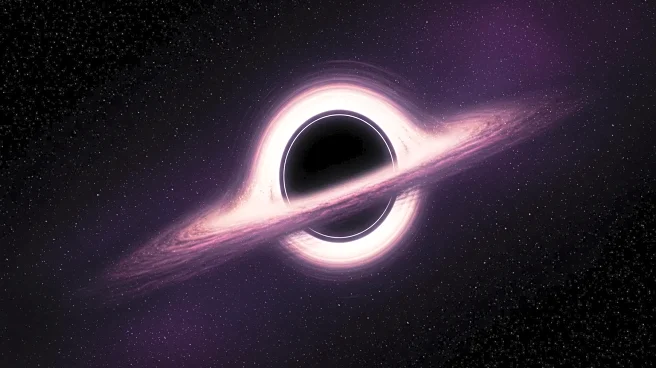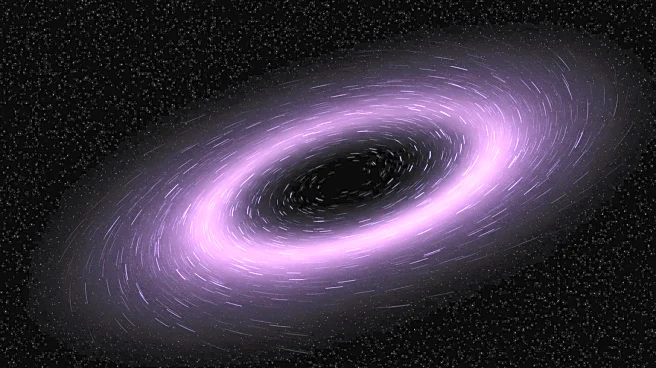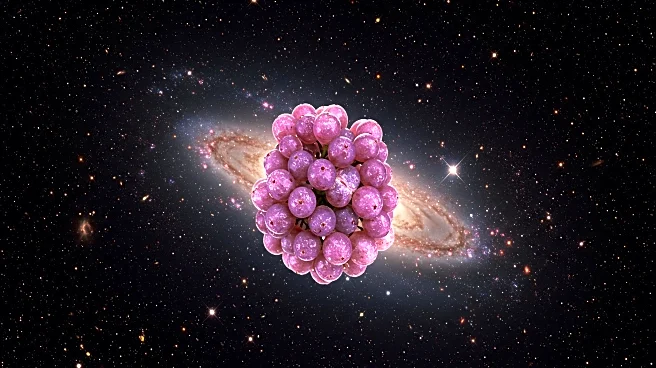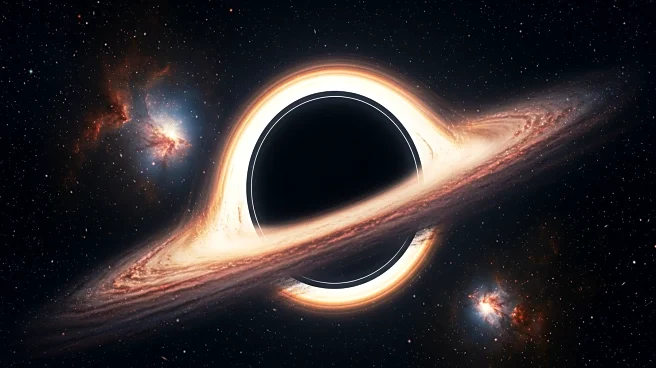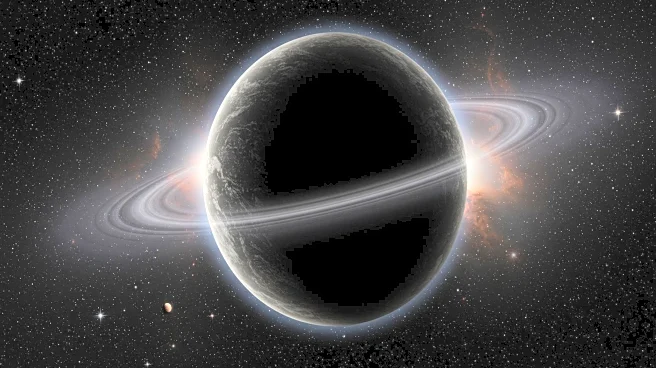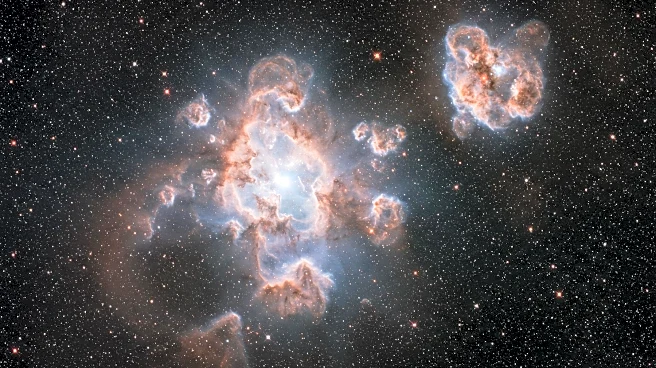Rapid Read • 8 min read
Astronomers have discovered a black hole in the galaxy SDSS J1148+1930, located approximately 5 billion light-years away, which could be the most massive ever found. This black hole is estimated to be around 36.3 billion times the mass of the Sun, placing it near the practical upper limit for black hole mass. The discovery was made by a team led by Carlos Melo-Carneiro from the Federal University of Rio Grande do Sul in Brazil, using a gravitational lensing technique. The black hole is part of a fossil galaxy, a massive blob that was once a galaxy cluster, where individual galaxies and their supermassive black holes merged over time.
AD
The discovery of such a massive black hole provides significant insights into the formation and growth of supermassive black holes in the universe. Understanding the mass and dynamics of these black holes can help astronomers unravel the mysteries of galaxy formation and evolution. This finding challenges existing theories about the limits of black hole growth and suggests that black holes can become even larger than previously thought. The implications extend to the study of cosmic structures and the gravitational forces that shape them.
Further observations and studies are expected to focus on the dynamics and characteristics of this ultramassive black hole. Researchers may explore the gravitational effects it has on its surroundings and how it influences the galaxy's evolution. The discovery could lead to new methods for measuring black hole masses and understanding their role in the universe. Additionally, astronomers might investigate other fossil galaxies to find similar black holes, potentially revising theories on black hole growth limits.
This discovery highlights the importance of gravitational lensing as a tool for observing distant cosmic phenomena. It also raises questions about the end state of galaxy formation and the processes that lead to the merging of supermassive black holes. The study of fossil galaxies could provide clues about the history and future of cosmic structures, offering a glimpse into the universe's past and its ongoing evolution.
AD
More Stories You Might Enjoy
